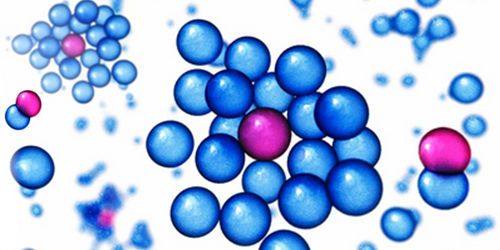A Smooth Transition in a Quantum Gas with Impurities
A quantum impurity in a Fermi gas pulls the surrounding fermions toward itself, generating a quasiparticle called a polaron. Increase the interaction strength, and that same impurity binds to just one fermion instead, adopting a stable molecular state. For a single impurity, theory predicts that this change occurs abruptly, but it was unknown whether the same sudden transition occurs with larger populations of impurities. In collaboration with researchers at the Max Planck Institute of Quantum Optics in Germany, Gal Ness, a graduate student at the Technion – Israel Institute of Technology in Haifa, and colleagues have performed an experiment that shows that the polaron-molecule transition is continuous, with both states coexisting over a range of interaction strengths [1]. Understanding the dynamics of this transition—one of the simplest strongly interacting many-body problems—could shed light on more complex systems.
The researchers trapped a gas of around 100,000 potassium ( K) atoms and cooled them to nearly absolute zero. Using a radio pulse, they flipped a few thousand of these atoms from their original spin state to another, so that they constituted impurities in the Fermi gas. By varying the amplitude of a magnetic field, the team tuned how strongly the impurities and surrounding (unflipped) particles interacted. Such experiments have been conducted before, but Ness and colleagues gleaned new insight by measuring the outcome using a Raman spectroscopy technique that revealed the proportion of impurities that adopted polaron and molecular states under varying interaction strengths.
The researchers say that the application of Raman spectroscopy to quantum gases could significantly advance the field. Next, they intend to investigate how a polaron’s momentum determines its properties and whether it’s possible to generate polarons with specific momenta on demand.
–Marric Stephens
Marric Stephens is a Corresponding Editor for Physics Magazine based in Bristol, UK.
References
- G. Ness et al., “Observation of a smooth polaron-molecule transition in a degenerate Fermi gas,” Phys. Rev. X 10, 041019 (2020).




